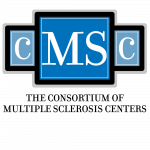Background: Although socioeconomic disparities that lead to differences in multiple sclerosis (MS) outcomes have been identified, specific factors contributing to such discrepancies are not well understood. MS PATHS is a network of centers that provides real-world data from a diverse population of patients with MS.
Objectives: Describe baseline (BL) characteristics and clinical outcomes by employment status and educational level in MS PATHS patients treated with peginterferon beta-1a or intramuscular interferon (IM IFN) beta-1a.
Methods: MS PATHS data cut v12 was used. Included patients were treated with peginterferon beta-1a or IM IFN beta-1a at BL or a follow-up visit. P values were based on a Wilcoxon signed-rank or Fisher exact test.
Results: Employment status was available for 1006 patients (17.6% unemployed [UE], 11.0% employed part time [PT], 71.4% employed full time [FT]). UE patients had greater mean BL disability and T2 lesion volume (T2LV) than PT/FT patients (Patient Determined Disease Step [PDDS] score: UE 3.07, PT 0.89, FT 0.96; T2LV [mL]: UE 13.3, PT 9.33, FT 8.4) and higher rates of progressive MS forms (UE 43.5%, PT 9.0%, FT 17.5%), ?1 relapse in the prior year (UE 53.1%, PT 39.6%, FT 30.0%), and comorbidities. UE and PT/FT patients differed significantly on all BL Multiple Sclerosis Performance Test (MSPT) assessments (P<0.001). At 2 y, UE patients had a significantly higher annualized relapse rate (ARR; 1.30) than PT (0.69; P<0.005) or FT (0.57; P17 y, GD] 22.3%). BL characteristics were generally similar irrespective of education level, though HS/SC patients had higher mean PDDS scores than CG/GD patients (?1.48 vs ?1.16) and higher rates of progressive forms of MS (22.6%26.9% vs 16.1%17.5%). All BL MSPT assessments differed significantly for HS/SC vs CG/GD patients (P<0.001). ARRs at 2 y were similar regardless of education level.
Conclusions: These results add to our understanding of characteristics and outcomes of underserved patients with MS treated with peginterferon beta-1a or IM IFN beta-1a. Lower levels of employment and education were both associated with greater burden of disease. Additional studies with longer observation times may help identify potentially modifiable risk factors.
[learn_press_profile]
